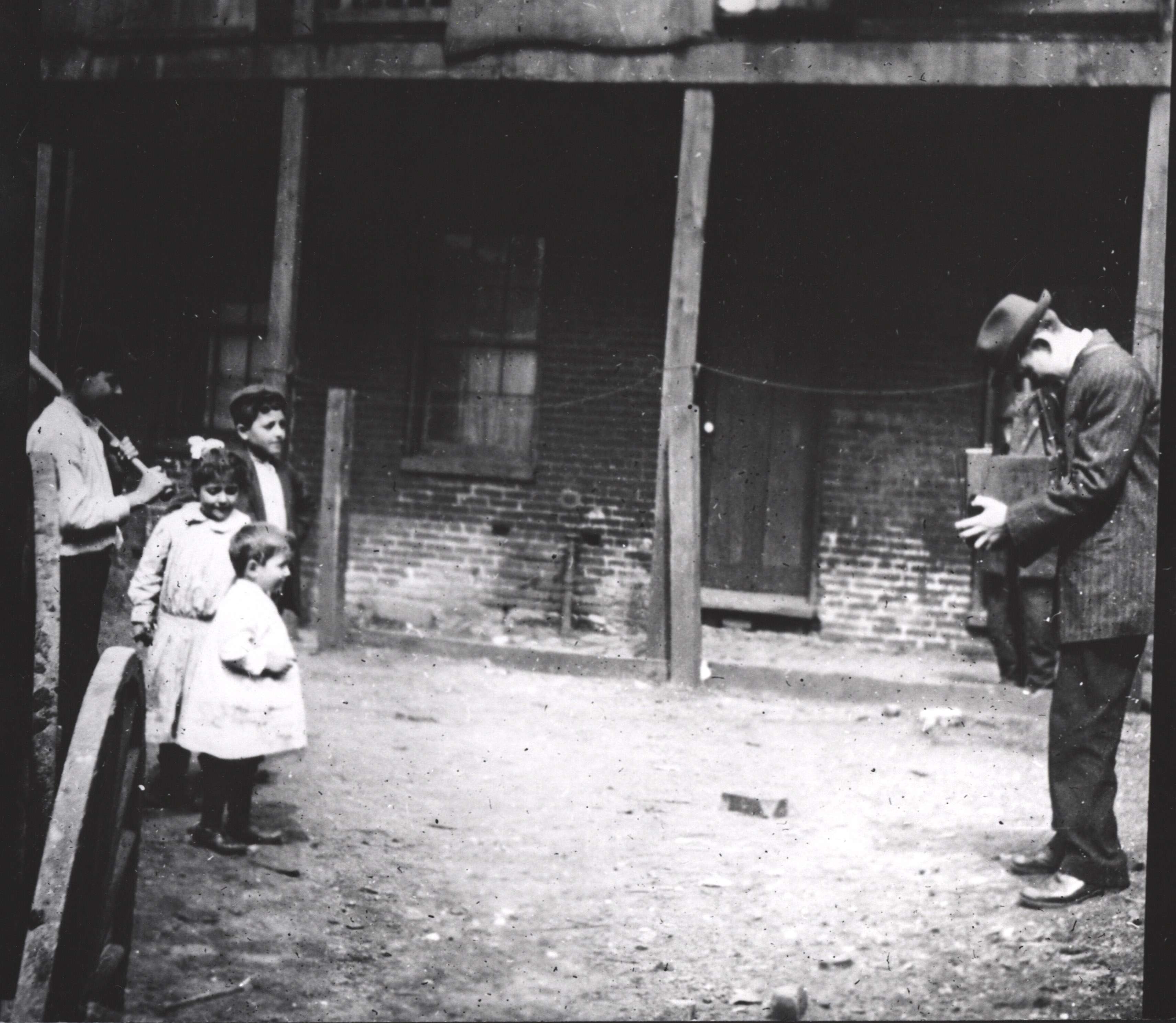Photograph of Lewis W. Hine
ca. 1912
Add to Favorites:
Add all page(s) of this document to activity:

Lewis Hine, a New York City schoolteacher and photographer, believed that a picture could tell a powerful story. He felt so strongly about the abuse of children as workers that he quit his teaching job and became an investigative photographer for the National Child Labor Committee.
Hine traveled around the country photographing the working conditions of children in all types of industries. He photographed children in coal mines, in meatpacking houses, in textile mills, and in canneries. He took pictures of children working in the streets as shoe shiners, newsboys, and hawkers. In many instances he tricked his way into factories to take the pictures that factory managers did not want the public to see.
He was careful to document every photograph with precise facts and figures. To obtain captions for his pictures, he interviewed the children on some pretext and then scribbled his notes with his hand hidden inside his pocket. Because he used subterfuge to take his photographs, he believed that he had to be "double-sure that my photo data was 100% pure--no retouching or fakery of any kind." Hine defined a good photograph as "a reproduction of impressions made upon the photographer which he desires to repeat to others." Because he realized his photographs were subjective, he described his work as "photo-interpretation."
Hine traveled around the country photographing the working conditions of children in all types of industries. He photographed children in coal mines, in meatpacking houses, in textile mills, and in canneries. He took pictures of children working in the streets as shoe shiners, newsboys, and hawkers. In many instances he tricked his way into factories to take the pictures that factory managers did not want the public to see.
He was careful to document every photograph with precise facts and figures. To obtain captions for his pictures, he interviewed the children on some pretext and then scribbled his notes with his hand hidden inside his pocket. Because he used subterfuge to take his photographs, he believed that he had to be "double-sure that my photo data was 100% pure--no retouching or fakery of any kind." Hine defined a good photograph as "a reproduction of impressions made upon the photographer which he desires to repeat to others." Because he realized his photographs were subjective, he described his work as "photo-interpretation."
This primary source comes from the General Records of the Department of Labor.
National Archives Identifier: 7580918
Full Citation: 174-G-22-4; Photograph of Lewis W. Hine; ca. 1912 ; Photographic Prints of Occupations, Labor Activities, and Personalities; General Records of the Department of Labor, Record Group 174; National Archives at College Park - Still Pictures (RDSS). [Online Version, https://www.docsteach.org/documents/document/photograph-of-lewis-w-hine, April 18, 2024]Activities that use this document
- Lewis Hine Shedding Light on Child Labor through Photographs
Created by the National Archives Education Team
Rights: Public Domain, Free of Known Copyright Restrictions. Learn more on our privacy and legal page.



